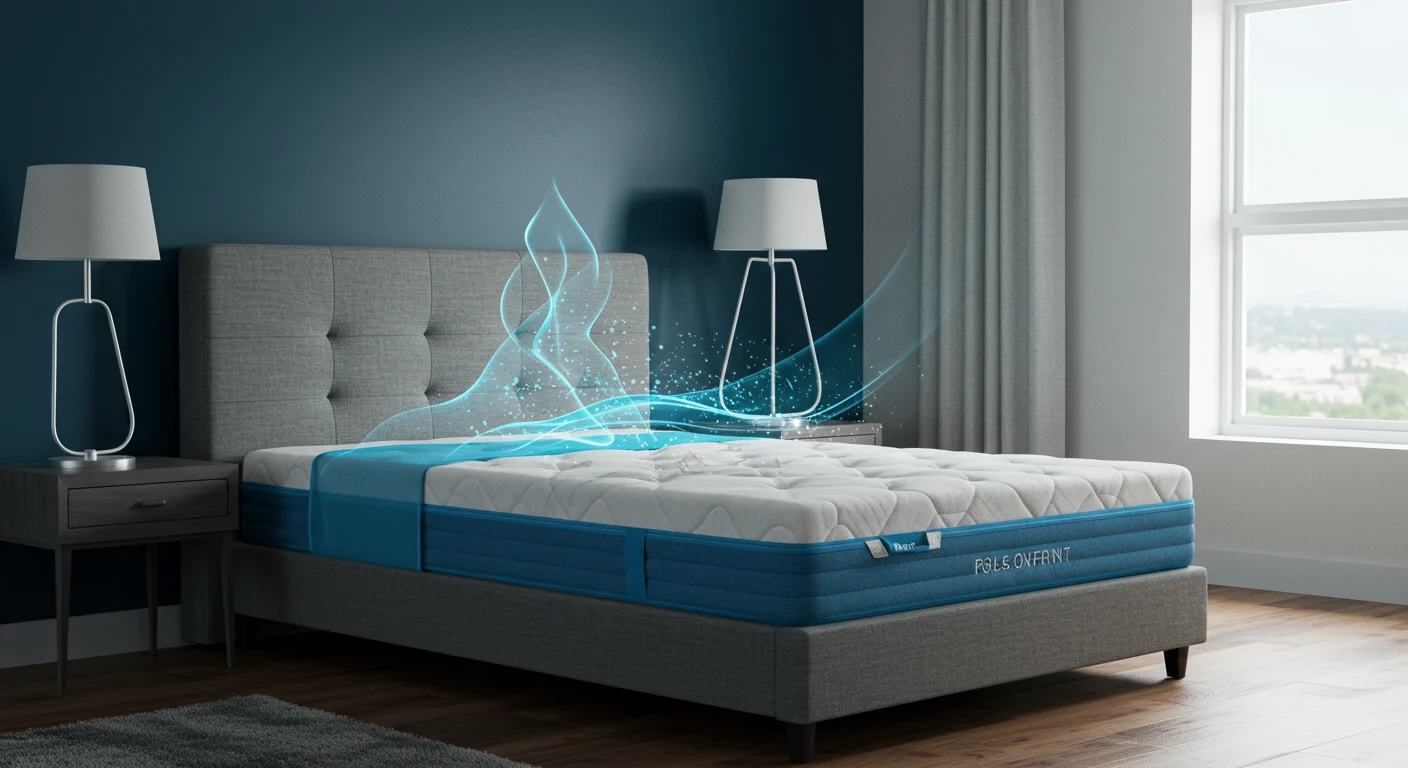
Best Cooling Memory Foam Mattress: Sleep Cool
I’ll shoot you straight: I’m a warm sleeper who’s tried way too many beds that promised a chilly night and served… a sauna. The new wave of “cooling” memory foam mattresses looks different, feels different, and—believe it or not—performs different. But how much better are they really? If you’re hunting for the Best Cooling Memory Foam Mattress, here’s the real-world scoop, minus the marketing fog.
What cooling actually means in 2025
Here’s the thing—“cooling” isn’t one trick. It’s a bunch of small wins that add up. The cover might be packed with phase-change material that feels cool to the touch. Foams can be infused with graphite, copper, or gel to pull heat away faster. You’ll also see open-cell structures, perforations, and even hybrid coil layers that move air instead of trapping it. On paper, it sounds like a spaceship. On your bed, it should feel like a calmer temperature, not an ice rink. If you’re chasing the Best Cooling Memory Foam Mattress, these layers and the way they’re stacked matter more than any single ingredient.
One quick sanity check: memory foam still hugs you. That contouring is amazing for pressure relief, but it also reduces airflow around your skin. Cooling tech helps offset the hug, so you get comfort without the swampy buildup. The goal is temperature neutrality across the night—not five minutes of frost followed by a heat spike.
Do they live up to the hype?
Short answer: mostly, if you pick the right build for your sleep style. Many of the new models deliver a cool-to-touch cover and better heat dissipation through the first sleep cycle. Then they settle into a steady, neutral zone instead of slowly warming. In normal rooms, that’s a noticeable difference. In a hot, humid space, nothing beats actual AC—but modern foams aren’t the heat traps they used to be. The Best Cooling Memory Foam Mattress models tend to combine a cool cover with breathable comfort layers and a coil base for airflow, which is what keeps temps steadier through the night.
One more reality check: cooling “feels” subjective. If you run hot from meds or hormones, you’ll feel small gains more dramatically. If you’re already temp-neutral, you’ll just think, Huh, nice. Less sweaty. That’s still a win.
Who actually feels a difference (and who won’t)
Side sleepers usually notice cooling upgrades fast because their shoulders and hips sink deeper into foam. Heavier bodies can benefit even more from hybrids that push air through the core. Back and stomach sleepers, especially lighter folks, may feel less of a shift—because they aren’t enveloped as deeply. If you share a bed, note that memory foam reduces motion transfer, but two warm sleepers create more thermal load. In that case, the Best Cooling Memory Foam Mattress for couples is often a breathable hybrid with a cool cover and a mid-density comfort layer so you don’t get stuck in a warm crater.
If you run very hot, pair the mattress with lightweight percale cotton or Tencel sheets, and avoid thick, non-breathable protectors. Tiny choices stack up.
How to choose your cooling feel without overthinking it
Start with the cover. If you want that immediate “ahh” when you lie down, look for phase-change fabric—it feels cool right away. If you prefer a steady, not-cold feel, breathable knits with ventilated foam underneath are great. Gel and graphite help spread heat, but they’re not magic; they need airflow below to keep working. That’s why many of the Best Cooling Memory Foam Mattress picks are hybrids—coils allow vertical air movement, so heat doesn’t camp out near your skin.
Comfort still rules. Don’t let “cooling” talk you into a bed that’s too firm or too soft. Side sleepers often like medium to medium-soft so shoulders can settle. Back and stomach sleepers lean a touch firmer to keep hips aligned. If you want deep hug without the heat, aim for a medium feel with breathable foams and a coil core. And hey—skip bulky protectors; a thin, breathable one keeps the cooling story intact.
A simple at-home test that actually tells you something
Night one, notice the first 10 minutes. Do you feel an instant cool-to-touch effect? Good sign for phase-change or cool fibers. Next, pay attention around hour two—that’s when many older foams start warming up. With modern builds, you should feel neutral, not clammy. If you’re still hot, troubleshoot the simple stuff first: sheets, protector, and room temp. If that fails, the comfort layer may be too dense or the core too closed off for your body type. That’s exactly why I keep an updated Best Cooling Memory Foam Mattress roundup on Consumer's Best—so you can match your sleep style to the tech that’ll actually help.
One more quick tip: give it a week. Foams break in and covers relax a bit. If after seven nights you’re still waking warm, it’s probably the wrong construction for you. No shame in swapping—sleep trials exist for a reason.
So… do these new mattresses earn the buzz?
For most hot sleepers, yes. The modern mix of cool-to-touch covers, ventilated foams, and hybrid airflow has turned memory foam from “too warm” into “just right” more often than not. Will it feel like sleeping under a vent? No. Will it keep you from overheating and flipping your pillow all night? That’s the goal—and it’s finally realistic. If you want the quick path to a great fit, check my latest picks in the Best Cooling Memory Foam Mattress guide on Consumer's Best. I keep it honest, I keep it updated, and I only recommend beds I’d actually sleep on.







